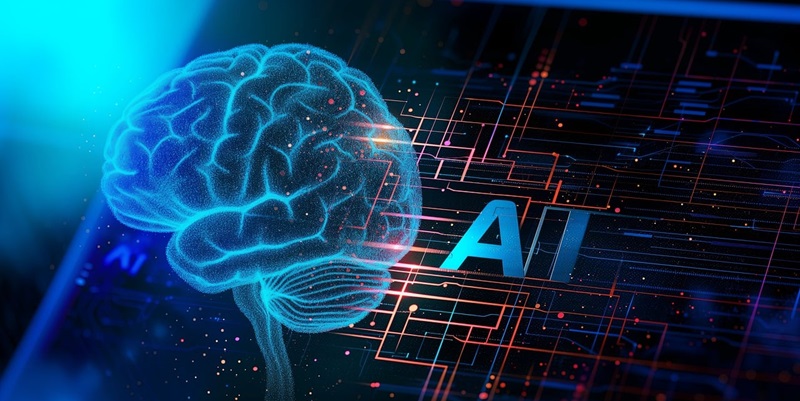The recent rapid rise of Microsoft’s OmniParser AI tool has made waves in the open-source community, swiftly climbing to the number one spot in trending models based on downloads from the AI code repository Hugging Face. Released quietly earlier this month, this generative AI model serves a critical purpose—enhancing the ability of large language models (LLMs), particularly vision-enabled ones like GPT-4V, to understand and interact with graphical user interfaces (GUIs). This surge in popularity denotes significant recognition of its potential in advancing AI capabilities in screen-based environments.
At its core, OmniParser is a powerful open-source tool designed to convert screenshots into structured elements that vision-language models (VLMs) can interpret and act upon. As the integration of LLMs into daily workflows increases, the necessity for AI to navigate and understand a variety of GUIs became evident to Microsoft. Hence, OmniParser was developed to empower AI agents to perceive and comprehend screen layouts, extracting essential elements such as text, buttons, and icons, and converting this information into actionable data.
The Core Components of OmniParser
OmniParser stands out in a field where the concept of AI interacting with GUIs isn’t entirely new. However, it excels in its efficiency and depth of capability compared to previous models, which struggled with accurately navigating screens and identifying specific clickable elements along with their semantic value. Microsoft’s approach incorporates advanced object detection and OCR technologies to navigate these challenges, resulting in a more reliable and efficient parsing system.
OmniParser’s strength lies in its component AI models, each responsible for specific tasks. YOLOv8 detects interactive elements like buttons and links by providing bounding boxes and coordinates, pinpointing which parts of the screen are interactable. BLIP-2 analyzes these detected elements to determine their purpose—for instance, discerning if an icon is a submit button or a navigation link, thereby providing crucial context. GPT-4V uses the data from YOLOv8 and BLIP-2 to make decisions and perform tasks such as clicking on buttons or filling out forms. It drives the reasoning and decision-making necessary for effective interaction. An OCR module additionally extracts text from the screen, helping to understand labels and context around GUI elements. By combining object detection, text extraction, and semantic analysis, OmniParser offers a plug-and-play solution compatible with various vision models, enhancing its versatility.
Open-Source Nature and Community Impact
One of the key factors contributing to OmniParser’s popularity is its open-source nature. This model’s design supports multiple vision-language models, granting developers flexibility in their choice of advanced foundation models. The open-source aspect also facilitates a broader audience’s access, inviting experimentation and collaborative enhancement. Microsoft’s Partner Research Manager emphasized the importance of open collaboration in building capable AI agents, with OmniParser being a part of this vision.
The release of OmniParser is emblematic of the broader competition among tech giants striving to dominate the AI screen interaction space. Anthropic recently launched a similar closed-source capability that enables AI to control computers by interpreting screen content. Apple has also entered this arena with their Ferret-UI, focusing on mobile UIs to help their AI understand and interact with elements like widgets and icons. OmniParser differentiates itself from these alternatives through its commitment to generalizability and adaptability across varied platforms and GUIs. Unlike models limited to specific environments, such as web browsers or mobile apps, OmniParser aims to be a universal tool that can work with any vision-enabled LLM to interact with a range of digital interfaces, from desktop applications to embedded screens.
Differentiation and Versatility
Despite its promise, OmniParser faces several challenges. A notable issue is the accurate detection of repeated icons, which often appear in similar contexts but serve different functions, such as multiple submit buttons on distinct forms within the same page. Microsoft’s documentation points out that the current models still struggle to effectively distinguish these repeated elements, potentially leading to incorrect action predictions. The OCR component also encounters difficulties with bounding box precision, particularly when dealing with overlapping text, which can result in erroneous click predictions. Nevertheless, the AI community remains optimistic about overcoming these challenges through ongoing improvements.
Future Prospects and Community Collaboration
The rapid rise of Microsoft’s OmniParser AI tool has garnered significant attention in the open-source community, quickly ascending to the top spot in trending models based on downloads from the AI code repository Hugging Face. Launched quietly earlier this month, this generative AI model plays a crucial role in enhancing the capabilities of large language models (LLMs), especially those with vision capabilities like GPT-4V, to understand and interact with graphical user interfaces (GUIs). Its surge in popularity underscores the recognition of its potential to advance AI in screen-based environments.
OmniParser is a robust open-source tool designed to transform screenshots into structured elements that vision-language models (VLMs) can interpret and act upon. With LLMs increasingly being integrated into everyday workflows, the need for AI to understand and navigate various GUIs became apparent to Microsoft. Hence, OmniParser was developed to empower AI agents to perceive and comprehend screen layouts, extracting critical elements such as text, buttons, and icons, and converting this information into actionable data.

